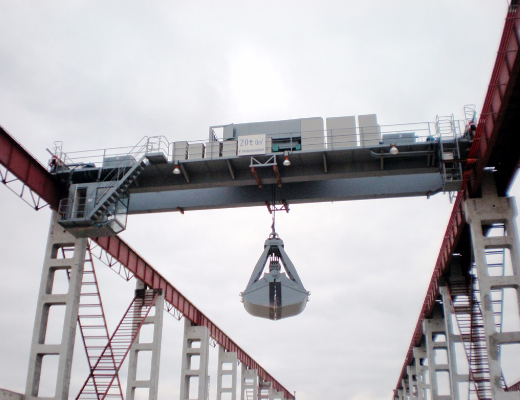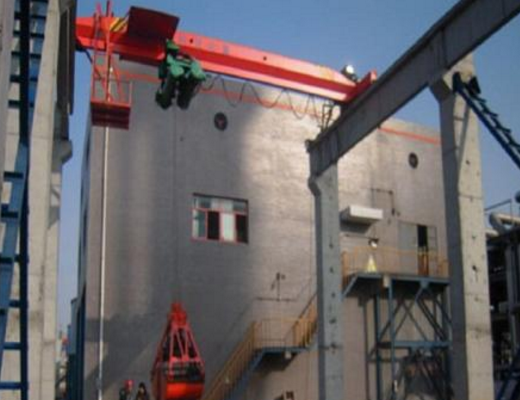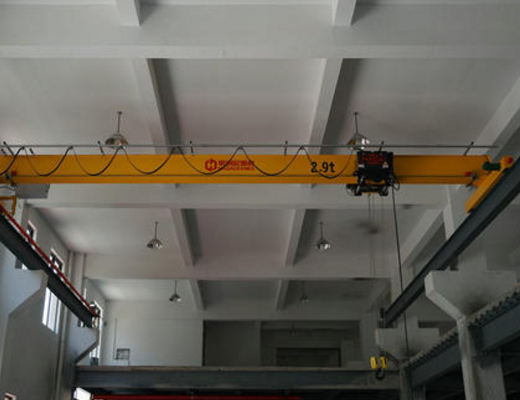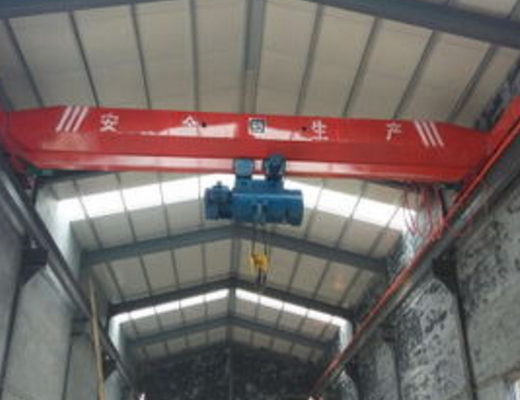Product classification

Single Girder Grab Bridge Crane
- Commodity name: Single Girder Grab Bridge Crane
- Description
-

The basic condition for ensuring that the grab bucket is filled with material is: having a suitable bucket shape, basic dimensions, and sufficient self-weight. Depending on the characteristics of the material being grabbed, grab buckets are commonly divided into four basic types: light, medium, heavy, and extra heavy. The self-weight of each type of grab bucket is adapted to the material and the ratio of self-weight to material weight, as seen in Table 1. The self-weight of a medium grab bucket is approximately equal to the material weight, while the self-weight of a light grab bucket is smaller, and that of a heavy grab bucket is larger.
For various types of grab buckets, corresponding parameters and structural types should be selected. The double-jaw grab bucket is suitable for grabbing granular and powdery materials. When the particle size is greater than 100mm or for harder materials, the jaw plates should be made with teeth. When using grab buckets to unload onto rail vehicles, the volume of the grab bucket generally does not exceed 3m. The multi-jaw (also known as lotus) grab bucket typically has 6 jaw plates, and the jaw plate cuts are pointed, suitable for grabbing materials that are difficult for double-jaw grab buckets to insert into, such as large hard ores, aluminum ingots, iron scraps, and scrap steel.
Table 1 Grab Bucket Characteristics
Grab Bucket Type Light Medium Heavy Extra Heavy Material Pile Density
/t·m0.8~1.2 >1.2~2.0 >2.0~2.8 >2.8 Self-weight to Material
Weight Ratio0.75~0.8 0.9~1.0 1.2~1.4 1.5~1.6 Applicable Materials Medium-sized coal, coke, slag, water
MudLimestone, large coal, mud
Coal, sand in water, flaky oxygenIron skinIron ore, powder ore, heavy sticky
Soil, rod-shaped iron oxide skinLarge ore, large manganese ore
Stone
Related
Message
Please provide the following valid information and we will contact you as soon as possible.







